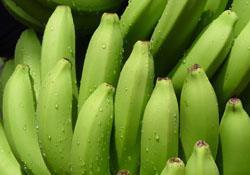
Gene-editing technology could provide a major boost in improving the prospects for bananas, provided regulators can be convinced, a leading scientist has claimed.
Dr Eli Khayat from agro-biotech firm Rahan Meristem in Israel believes Crispr-Cas9 could address a host of issues facing growers, from visual imperfections to resistance to some of the most challenging diseases. Khayat was speaking at the International Banana Congress in Miami, Florida this week.
Crispr - which stands for Clustered Regularly Interspaced Short Palindromic Repeats - is revolutionary new technology which has been touted as a solution to everything from human to animal disease eradication. It allows scientists to precisely alter sequences of DNA in crops without leaving any transgenic footprint - a key difference from genetic modification - and it has already been used to increase flavour in tomatoes and remove brown spots on mushrooms, among other applications.
The latest iteration of Crispr, Cas9, is described as scissors that can cut DNA internally, enabling scientists to disrupt faulty sequences or replace them with a new one. Practical applications in the banana industry include removing susceptibility to black sigatoka, which is one of the major headaches facing growers today, while a recent trial successfully added yellow pigment to fruit. “We can cover all the traits we want using this technology in bananas,” he said.
Critics of Crispr-Cas9 say that the approach is new and its implications are not fully understood, arguing the fact that no genetic footprint is left makes it impossible to distinguish from unedited crops. The European Union has also stood in the way of using the technology in the bloc, a decision which has angered its advocates.
While Crispr-Cas9 has widely been touted as an all-encompassing silver bullet, Khayat also warned that there are still constraints and it should not be regarded as an easy option. Comparing it to the construction of a house, where you need an architect, tools and builders, to make use of Cas9 you need genes, to build a targeted DNA, tissue cells to receive the DNA and a process for screening the plants to see if they’ve been successful.
The most challenging elements in the process for bananas are the delivery system and screening process, he added, though he also said protoplast - cells with walls removed - are helping with the former and revealed that Rahan Meristem is developing an electro-optical device to predict the phenotype that will be in the field, which will assist with screening.
In summary, the only thing standing between the industry and major progress in this area is regulation, Khayat suggested. “So we have the necessary toolbox for gene editing and avoiding sprays etc in this industry, and it’s just a matter of choice - not just ours but also regulatory bodies,” he concluded. “I would strongly suggest in your countries to convince the regulatory agencies to look at gene editing, and evaluate and deregulate this technology, because right now our hands are tied.”



